Wind energy Potential
Wind sites are rated by class (from 1--7) which represents some average
wind power density. In general, wind speeds at height 100 meters above the
ground are 20-30% higher than at ground level.
Generally speaking, wind farms would be located in Class 3 sites and above.
 Historically in the US, the build out of wind energy has occurred when congress issued a production tax credit (PTC) for wind deployment.
Historically in the US, the build out of wind energy has occurred when congress issued a production tax credit (PTC) for wind deployment.

At this time (Spring 2015) the future of wind growth in the US is quite unclear:
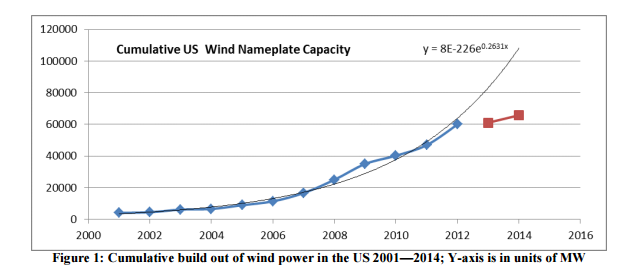
Broad averages of class sites for the US are shown below:
 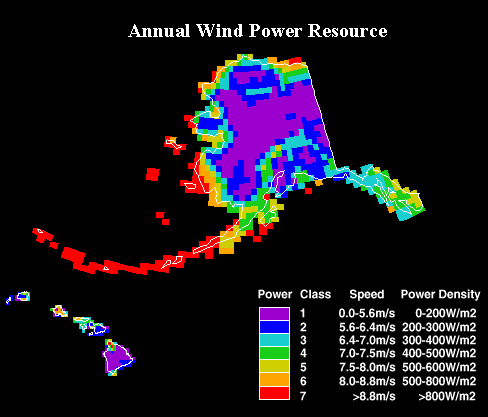
Class 3 sites and above
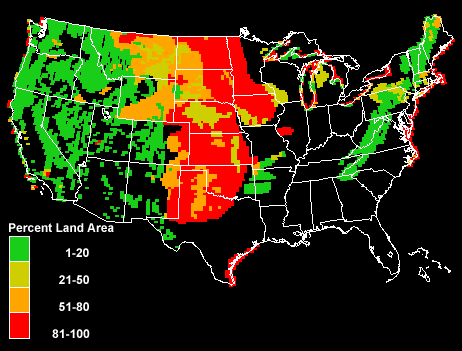
In general, one doesn't want to locate wind farms at the windiest locations but rather at locations in which the wind blows at moderate speeds a high percentage of the time. This is called
"wind certainty". The map below color codes this certainty parameter for all Class 3 wind sites (and above) in the US. While there are no large scale regions of High (dark red) in the lower 48 states, there are plenty of large scale areas (including Oregon) which are rated as 3 in certainty but everything at 2 or higher is a good location for a wind farm. Note the Great Lakes area:
 Alaska is good 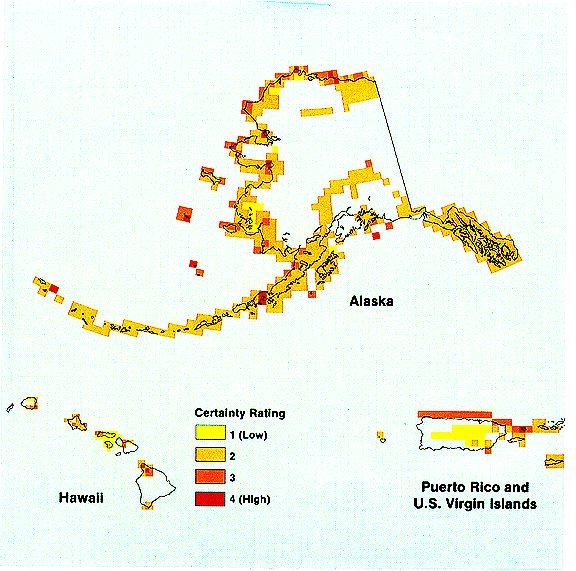
Some Regional Potentials:
A useful way to look at individual states is via the grid maps below. Any grid with 3 or higher in it is a good location for a potential wind farm.
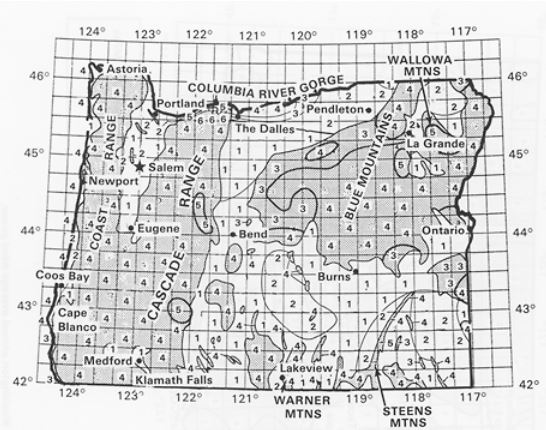 | Oregon: There are many excellent locations here. The entire Oregon coast is good as well as most of SW Oregon (particularly around Meford. There is a natural wind channel in the Gorge. The area around Burns also has abundant wind resources. |
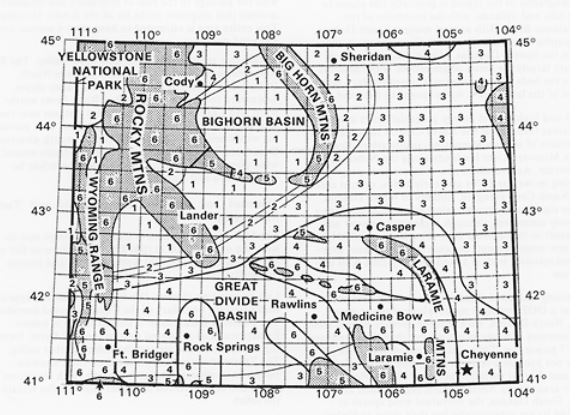 | Wyoming: If you look in the lower right portion you will see a stretch of class 6 boxes running EW. This is where I-80 is and because of that existing infrastructure (e.g. High Voltage transmission lines
often run near Interstates) this is where the first new Wind Farms were constructed in the US. |
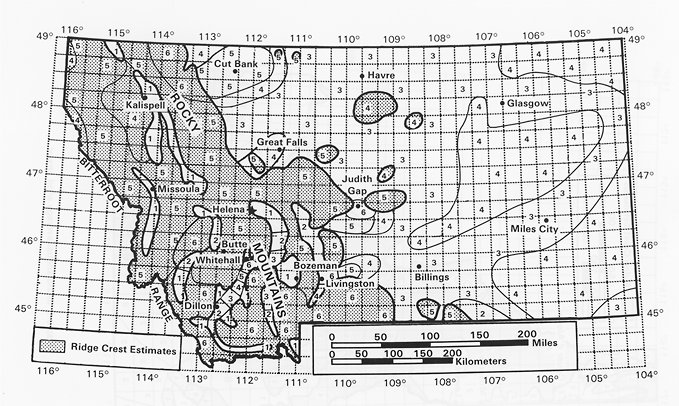 | Montana: While it is impractical to build wind farms in the Rocky Mountains, Eastern Montana is a rich resource but since its remote there is very little infrastructure in place with which the wind generated electricity could be exported. This is currently a wasted resource. |
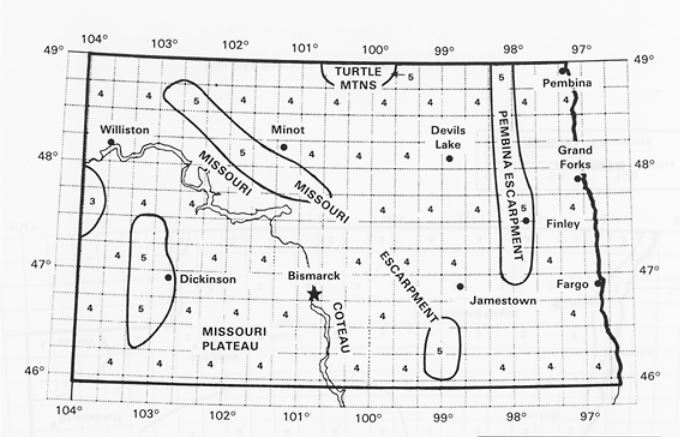 | North Dakota: Currently this is the biggest wasted resource of all, thousands of MWs of wind power is constantly blowing across the ND wasteland but alas there is no infrastructure. Almost all of ND is at class 4 and the large scale bluffs are class 5. |
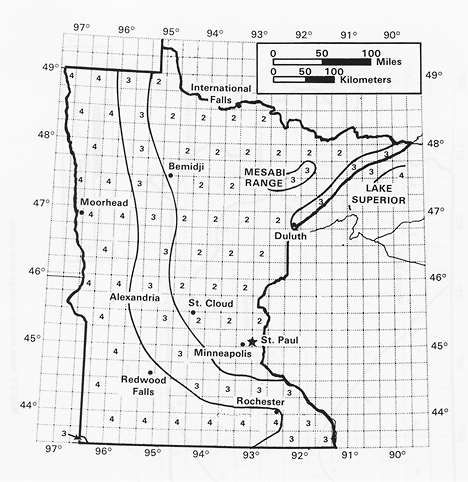 | Minnesota: Most of western Minnesota (which borders ND) extends the ND example. However, there were some wind farms built in the mid 80's in the Rochester Minnesota area. |
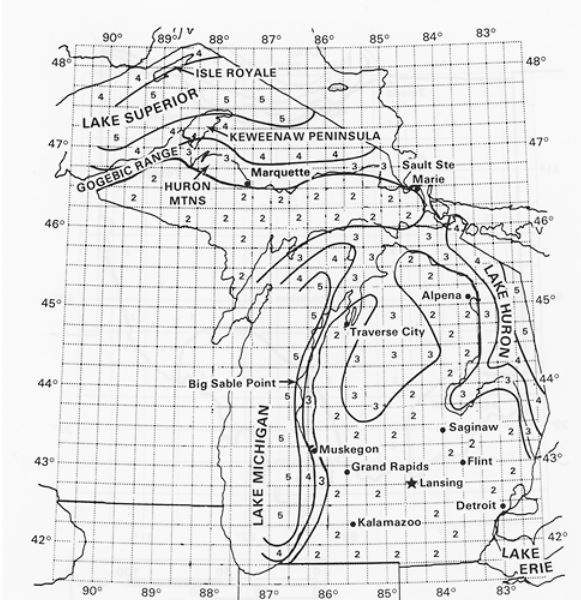 | Michigan: There is fantastic resource along the shore of Lake Michigan that borders Western Michigan. Currently there are no plans for wind development here. That's kind of nuts - the resource is there and there is very good
transmission line infrastructure.
|
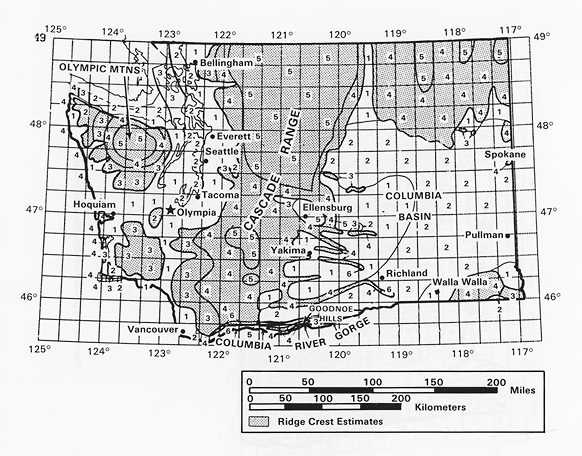 | Washington: Current wind farm deployment is in the area around Yakima and Ellensburg with additional deployment near Richland and Walla walla. As of 2013 WA state had about 3000 MW of wind deployment which is quite aggressive for a state that does not have that much resource. Like OR, WA has significant wind resource along its Pacific Coast.
|
 | Southern California: Due to mountain topology there are several small scale class 5 and 6 sites available. This was recognized relatively early. The area around the San Gorgonio Pass is continuously being built on and has a range of turbines that are small (built 10-12 years ago) and some newer larger ones mixed in. |
|










